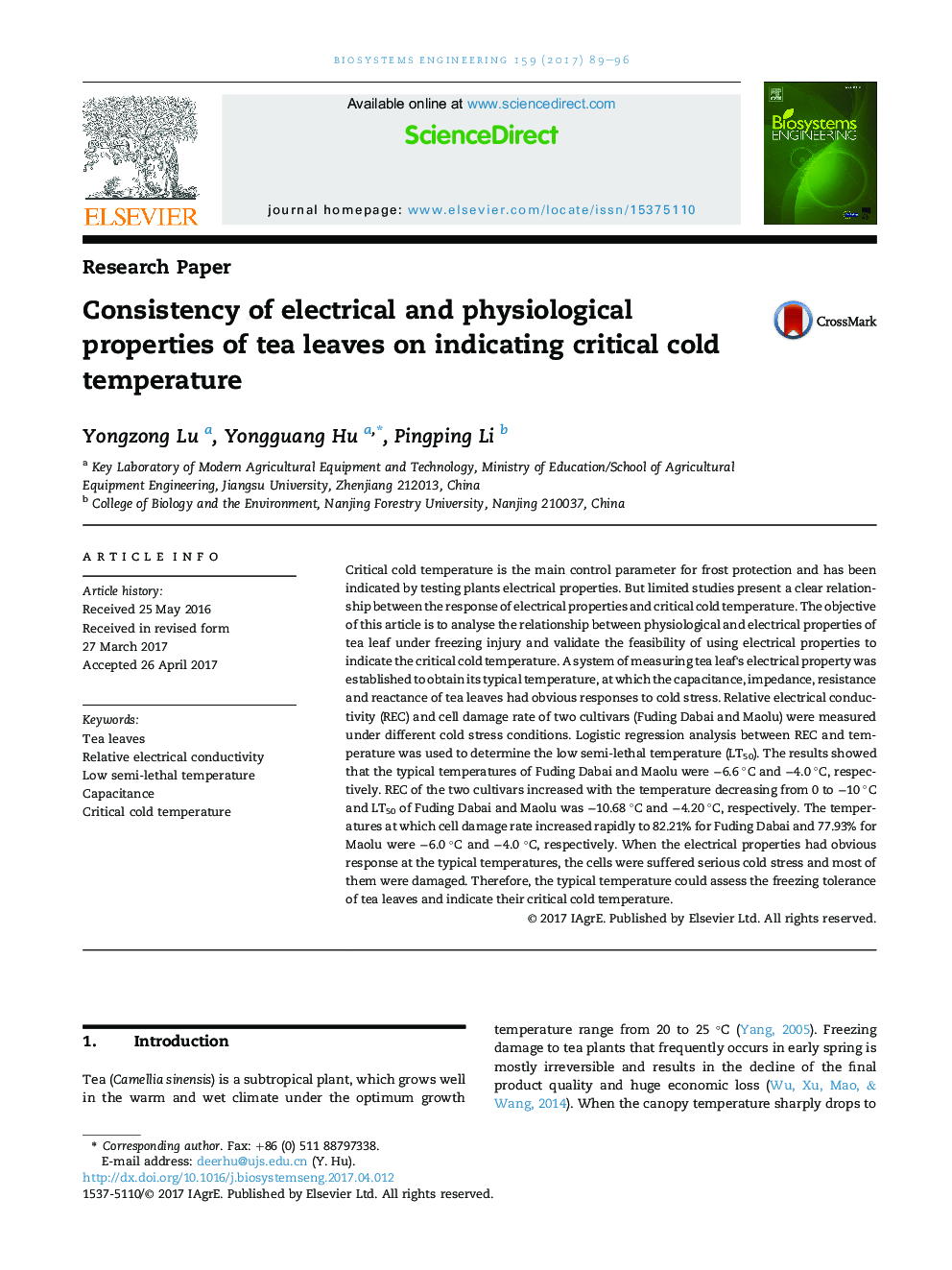| Article ID | Journal | Published Year | Pages | File Type |
|---|---|---|---|---|
| 5471899 | Biosystems Engineering | 2017 | 8 Pages |
Abstract
Critical cold temperature is the main control parameter for frost protection and has been indicated by testing plants electrical properties. But limited studies present a clear relationship between the response of electrical properties and critical cold temperature. The objective of this article is to analyse the relationship between physiological and electrical properties of tea leaf under freezing injury and validate the feasibility of using electrical properties to indicate the critical cold temperature. A system of measuring tea leaf's electrical property was established to obtain its typical temperature, at which the capacitance, impedance, resistance and reactance of tea leaves had obvious responses to cold stress. Relative electrical conductivity (REC) and cell damage rate of two cultivars (Fuding Dabai and Maolu) were measured under different cold stress conditions. Logistic regression analysis between REC and temperature was used to determine the low semi-lethal temperature (LT50). The results showed that the typical temperatures of Fuding Dabai and Maolu were â6.6 °C and â4.0 °C, respectively. REC of the two cultivars increased with the temperature decreasing from 0 to â10 °C and LT50 of Fuding Dabai and Maolu was â10.68 °C and â4.20 °C, respectively. The temperatures at which cell damage rate increased rapidly to 82.21% for Fuding Dabai and 77.93% for Maolu were â6.0 °C and â4.0 °C, respectively. When the electrical properties had obvious response at the typical temperatures, the cells were suffered serious cold stress and most of them were damaged. Therefore, the typical temperature could assess the freezing tolerance of tea leaves and indicate their critical cold temperature.
Keywords
Related Topics
Physical Sciences and Engineering
Engineering
Control and Systems Engineering
Authors
Yongzong Lu, Yongguang Hu, Pingping Li,
